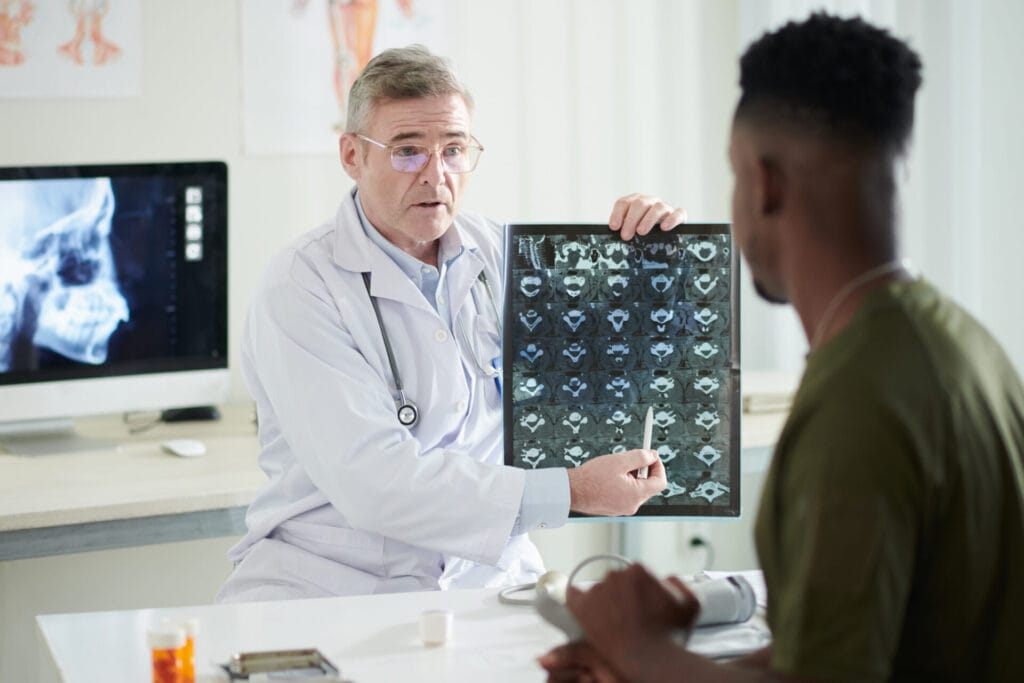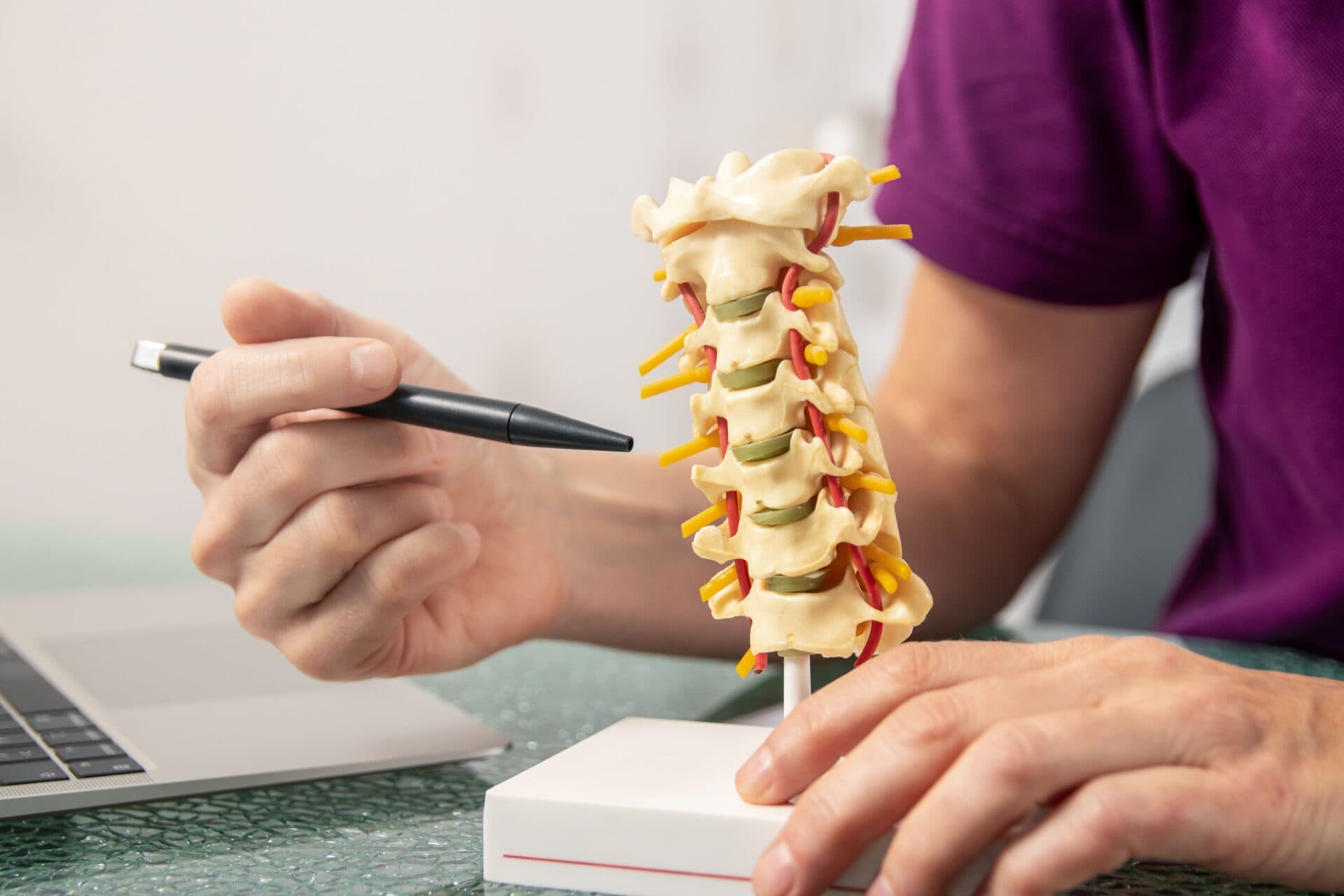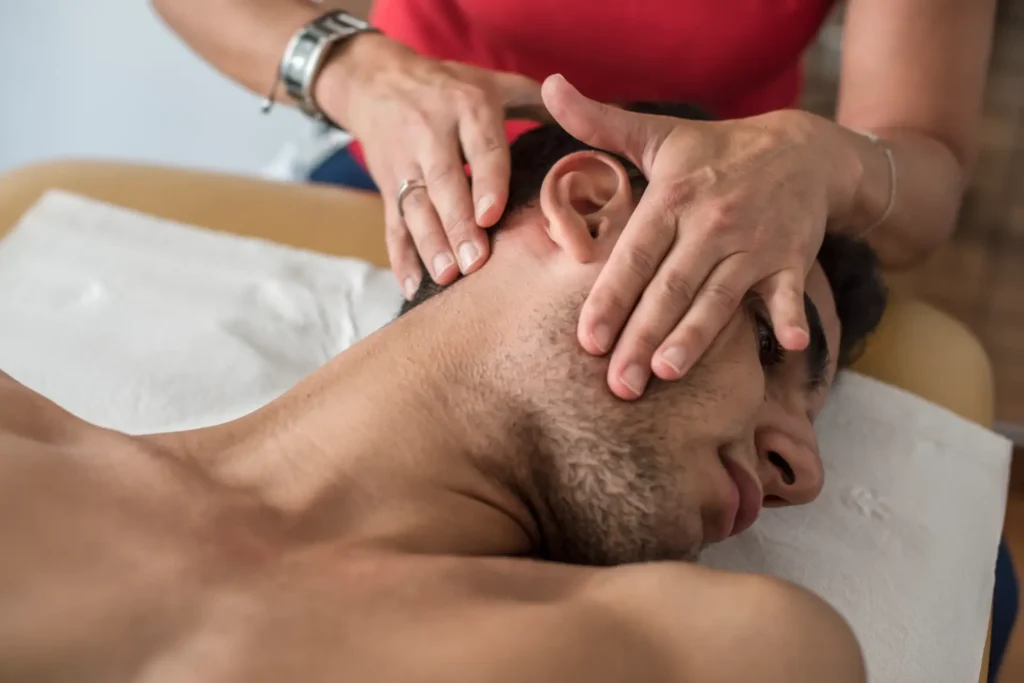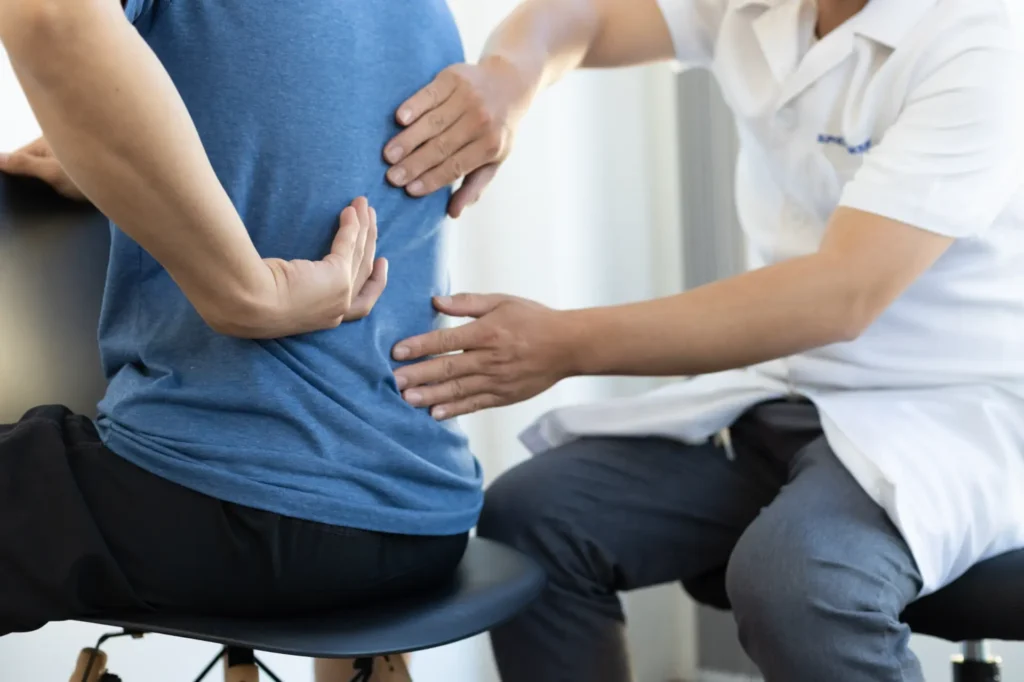The spinal column, a critical pillar of human anatomy, comprises vertebrae and spinal discs that work together to provide support and flexibility. Among the various disc issues that can affect this intricate structure, disc extrusion stands out due to its potential to cause significant pain and discomfort.
What is a Spinal Disc?
A spinal disc acts as a shock absorber between the vertebrae in the spinal column, consisting of a tough outer wall, the annulus fibrosus, and a soft, jelly-like center, the nucleus pulposus. These discs play a pivotal role in allowing movement and providing stability to the spine. The spinal discs also help distribute stress and pressure evenly across the spine, preventing the vertebrae from rubbing against each other. They provide flexibility and allow movements, such as bending, twisting, and stretching.

Over time, spinal discs can degenerate or become injured, leading to conditions such as herniated discs, bulging discs, or degenerative disc disease. These conditions can cause pain, numbness, tingling, and weakness in the back, neck, and limbs.
Treatment for spinal disc issues may include physical therapy, anti-inflammatory medications, steroid injections, or in severe cases, surgery to repair or replace the damaged disc. Maintaining a healthy weight, regular exercise, proper lifting techniques, and good posture can also help prevent disc-related problems.
Disc Extrusion: A Closer Look
Disc extrusion occurs when the nucleus pulposus breaks through a tear in the annulus fibrosus but remains confined within the disc’s outermost layers. This condition is a form of herniated disc, distinguished by the extent to which the disc material protrudes into the spinal canal, potentially causing pressure on the spinal nerves.
Symptoms of a Disc Extrusion
The symptoms of disc extrusion can vary depending on the location of the affected disc but commonly include low back pain, neck pain, and sciatica — a sharp pain that radiates down the leg. Other symptoms may involve nerve pain, loss of bowel or bladder control, and symptoms of nerve root compression, such as weakness or numbness in the limbs.
Common Causes and Risk Factors of an Extruded Disc
The journey to an extruded disc often begins with the natural wear and tear associated with aging, which leads to disc degeneration. However, lifestyle choices and physical stressors can accelerate this process. Activities that place excessive strain on the lumbar spine, genetic predisposition, and environmental factors contribute to the risk of developing disc issues. Understanding these factors is crucial in both preventing and managing disc extrusions.
Diagnosing and Treating Disc Extrusion
Diagnosis typically involves imaging tests such as MRI or CT scans to visualize the extent of disc damage and its impact on the spinal canal and nerves. Treatment options range from conservative treatments — like physical therapy and pain management — to more invasive approaches, such as spine surgery. The goal is to alleviate pain and inflammation while addressing the underlying cause of the extrusion.
For many patients, non-surgical treatment methods provide significant pain relief and recovery. These may include medications, physical therapy, and interventions at a pain center to manage symptoms. In cases where conservative treatments are ineffective, minimally invasive or traditional spine surgery may be considered to remove the extruded material and relieve pressure on the spinal nerves.
Preventing Disc Extrusion
While some extrusions can’t be prevented due to factors like the natural aging process, maintaining a healthy lifestyle can reduce the risk. Regular exercise, proper lifting techniques, and maintaining a healthy weight can help preserve spinal health and minimize the chances of disc issues.
- Regular exercise can help strengthen the muscles that support the spine, reducing the strain on the discs.
- Proper lifting techniques like bending at the knees and using your legs to lift heavy objects, can prevent excessive strain on the spine.
- Maintaining a healthy weight can reduce the amount of pressure on the discs in the spine.
In addition to these lifestyle measures, it’s essential to maintain good posture and ergonomic work environments to reduce strain on the spine. Avoiding activities that place excessive stress on the spine, such as heavy lifting or repetitive bending, can also help prevent disc extrusion.
It’s also crucial to seek treatment for any underlying medical conditions that contribute to disc extrusion, such as osteoporosis or degenerative disc disease.
This may involve working with healthcare professionals to develop a comprehensive plan to manage and treat these conditions.
Overall, the prevention of disc extrusion involves a combination of lifestyle changes, proper body mechanics, and seeking treatment for any underlying conditions. By doing so, individuals can reduce their risk of experiencing this painful condition.
Conclusion
Disc extrusion is a significant condition that can cause debilitating pain and impact quality of life. Understanding its symptoms, causes, and available treatment options is crucial for those affected. With the right approach, including timely medical intervention and lifestyle adjustments, individuals can manage the symptoms of disc extrusion and maintain a healthy, active life.
If you need help treating your extruded disc, contact one of our specialists here at Prestige right now!
Sources:




